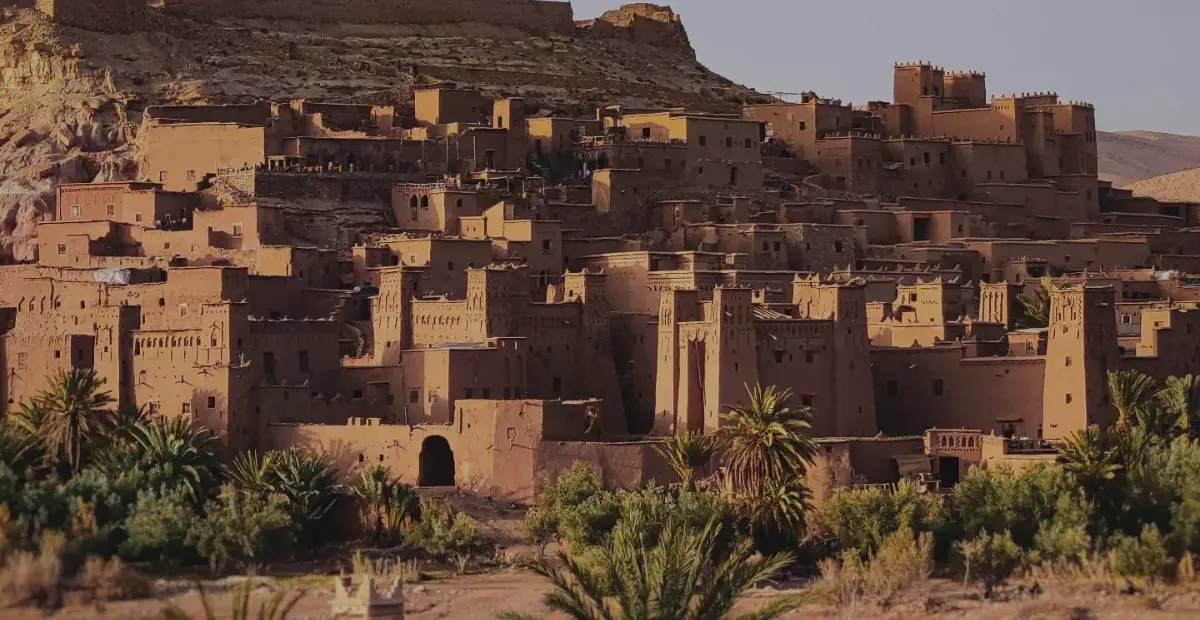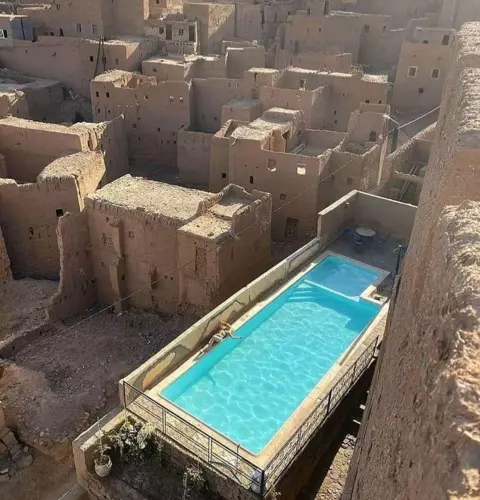
Blog
Kasbahs of Morocco: A Guide to Exploring Ancient Desert Fortresses
Discover the famous Kasbahs of Morocco, ancient fortified dwellings found across the desert and mountains. Learn where to visit and stay in kasbahs responsibly.
Introduction
Dotting Morocco’s arid landscapes sits a iconic vestige of the past – the ancient desert kasbahs. These impressive fortified structures constructed from mudbrick and earth speak to a time when caravans crossed the barren Sahara and warring tribes sought dominion over vital trade routes. While many now sit in photogenic ruins, the enduring mystery and grandeur of kasbahs persist. As the call to prayer echoes through a remote oasis, it’s easy to imagine camel trains approaching a desert kasbah centuries ago as a place of respite and exchange.
Today visitors to Morocco can explore these crumbling medieval fortresses and also overnight in restored kasbahs turned hotels, restaurants, and museums. From the landmark UNESCO site of Ait Benhaddou to small rural villages in the Draa Valley, kasbahs unveil Morocco’s rich history at the crossroads of civilizations. This guide will cover the background, architecture, and experiences surrounding the iconic kasbahs studding Morocco’s arid terrain. As the sun sets over the ruins of a once-mighty fortress, you’ll appreciate these ancient dwellings helped shape the modern nation.
Famous Kasbahs to Visit in Morocco
Some kasbahs stand out as must-see sights:
- Ait Ben Haddou – One of Morocco’s most iconic and well-preserved kasbahs. Hilltop fortification made from red earth situated near Ouarzazate and regularly used as a film set.
- Telouet Kasbah – Ruined yet monumental former palace fortress in the High Atlas built in the 1800s. Associated with the notorious Glaoui clan who controlled the surrounding region. Long deserted but retains grandeur.
- Taourirt Kasbah – Imposing kasbah with ornately decorated interior rooms and artifacts located in Ouarzazate right in town. One of the few accessible and livable fortified kasbahs left.
Staying in Converted Kasbahs
In some areas, ancient dwellings now accommodate guests:
- Agdez and N’kob – Tiny villages in the Draa Valley famous for kasbah stays near Zagora. Experience authentic rural culture.
- Skoura – Luxury eco-lodges consisting of restored kasbahs with updated interiors and amenities set amid palm groves.
- Treks into the desert sometimes end nights at small kasbahs converted into basic guesthouses.
Staying in kasbahs provides vivid insights into history and culture.
Kasbah Design Elements
The Kasbahs share common fortified architecture:
- Constructed from rammed earth, mudbrick, and adobe for natural insulation in harsh environments.
- Towering walls up to 10 feet thick with narrow slits for archers provided defense.
- Zigzagging angular passages prevented direct attack by enemies once inside.
- Strategically situated on hilltops or cliff edges for maximum visibility and control.
- Interior lavish decor and fountains contrasted the spare exterior.
- Features like granaries, hammams, mosques met all needs internally.
Kasbahs’ Role in Trade and Conflict
Kasbahs enabled the trans-Saharan caravan trade:
- Provided lodging and protection for traders crossing the desert with goods.
- Served as fortified bases for tribes to monitor and tax passing caravan routes.
- Imposing but hard to defend design led to bloody power struggles between tribes.
- Declined with shifting trade patterns and the French taking control in the 1900s.
Responsible and Respectful Kasbah Tourism
Visit kasbahs mindfully by:
- Seeking permission before entering inhabited rural kasbah villages.
- Spending money at kasbahs helps locals economically and preserves heritage.
- Dressing appropriately and not disturbing residents’ privacy.
- Avoiding damaging fragile buildings when photographing.
- Learning about kasbah history to better understand the culture.
Conclusion
Morocco’s ancient desert kasbahs captivate with their imposing yet beautiful simplicity that has endured the ravages of time and conflict. As the red walls glow in the rising sun’s rays, you can feel the currents of culture that have washed over these structures for centuries. While empires and rulers have risen and crumbled around them, the kasbahs stand timeless. By visiting and understanding their legacy responsibly, we help ensure history never forgets.
Whether appreciating their imposing silhouette from afar, exploring the maze-like alleys, or staying overnight in restored fortresses, kasbahs unlock Morocco’s fascinating past at the crossroads of civilizations. Let these mudbrick dwellings transport you back through the ages to imagine caravans traveling across vast solitudes, seeking shelter and exchange. Kasbahs remain vital treasures revealing Morocco’s essence – innovation, resilience, and embracing those who come in openness and mutual learning.
Get Inspired and Plan Your Trip Today!
- Check out our Morocco Private Tours to see all the fantastic places you can visit in Morocco.
- Customize your own tour using the form on our website to create a vacation that is perfect for you.



FAQs
A kasbah is a type of medieval fortress or fortified structure built in areas like the Moroccan desert and mountains, intended to protect and lodge inhabitants.
Top kasbahs to visit include Ait Benhaddou, Telouet Kasbah, Taourirt Kasbah in Ouarzazate, and small kasbahs in the Draa Valley and Skoura region.
Yes, some kasbahs have been converted into hotels, guesthouses, and restaurants, especially in the Skoura Valley and Draa Valley areas.
Moroccan kasbahs were constructed from mud brick, rammed earth, and adobe. They feature towering walls, angular passages, and strategic hilltop locations.
Kasbahs enabled trans-Saharan caravan trade, provided bases for ruling tribes, contributed to architectural styles, and today provide economic benefits through cultural tourism.
Arhhal
Moroccan Travel Expert
Plan an Entertaining Moroccan Holiday Now!
We can help you fit your stay and experience within your allotted budget.
